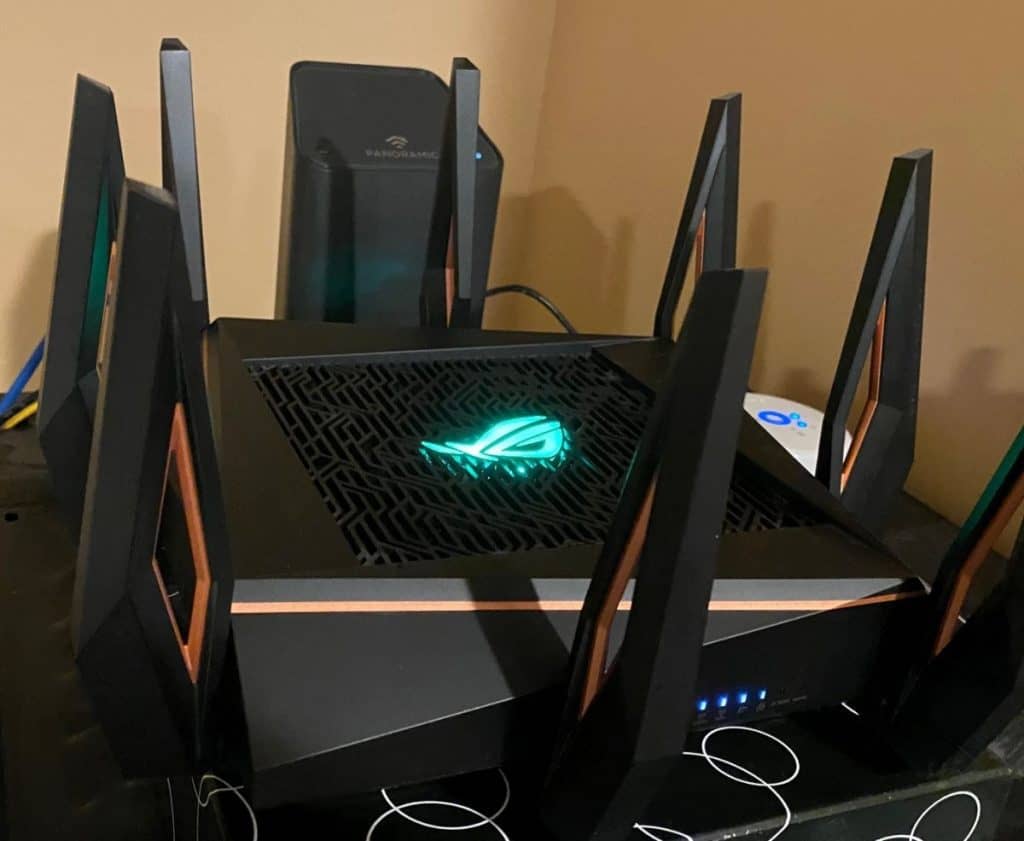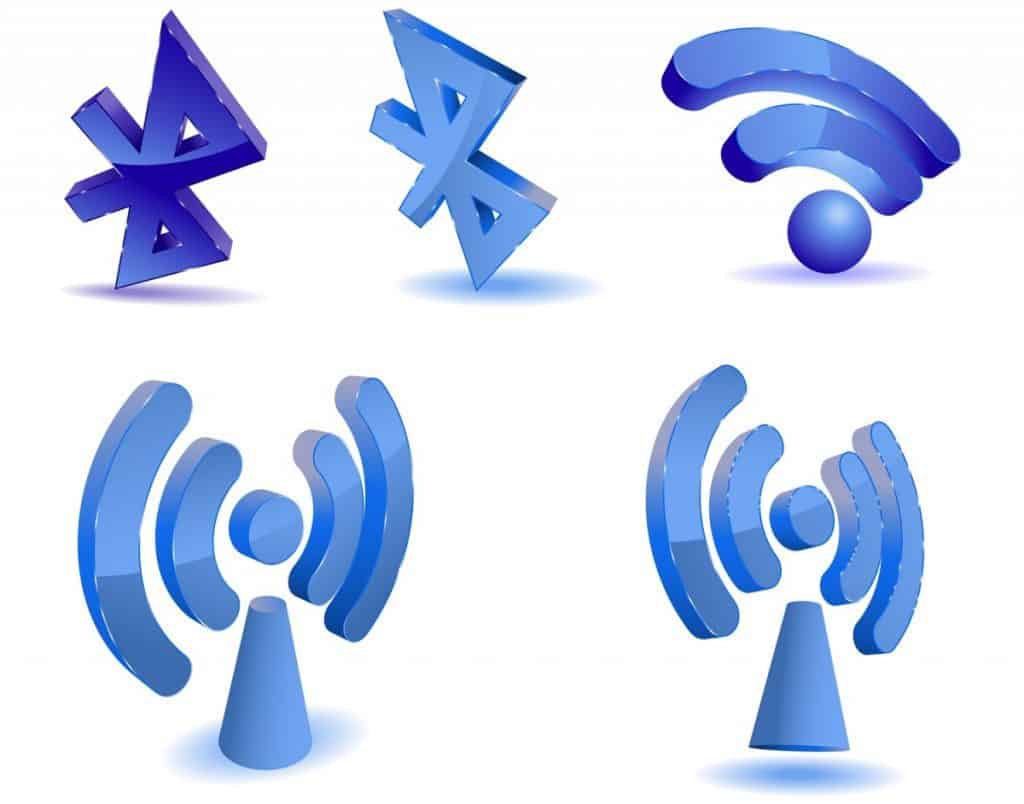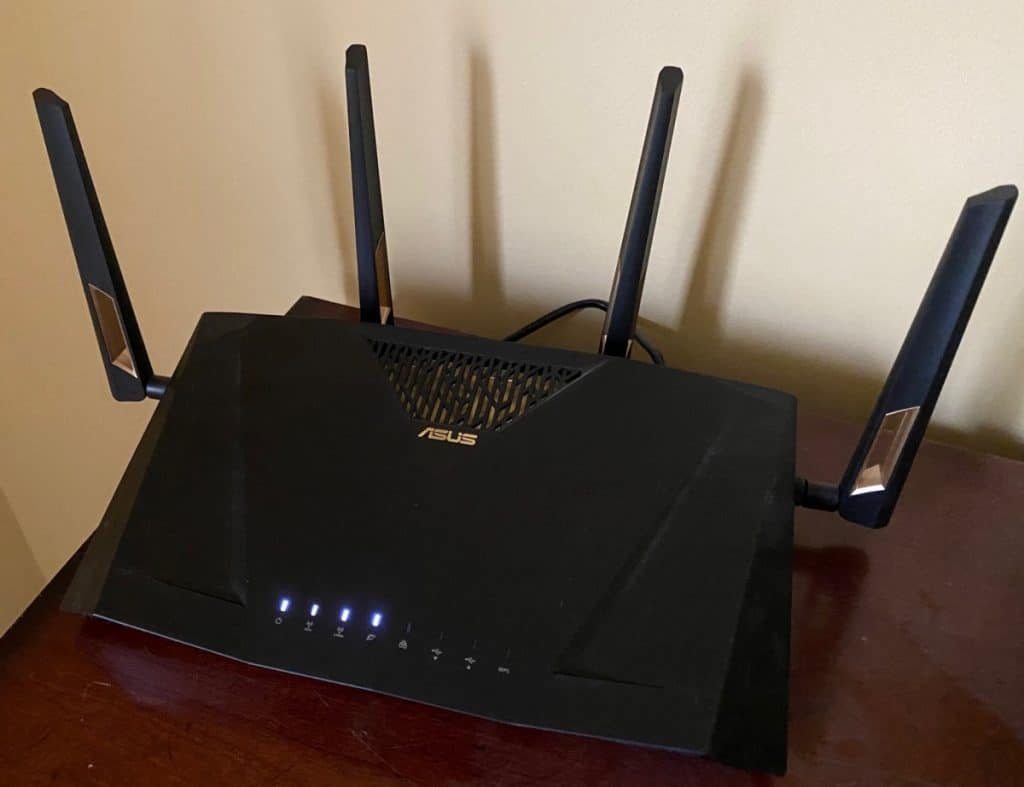A dual or tri-band router allows you to operate your Wi-Fi on 2.4 GHz and 5 GHz. Although two frequencies are theoretically better than a single-band router, you may still have a few issues. In that case, you may be wondering if turning off 5 GHz will improve your Wi-Fi connection.
Turning off 5 GHz can improve your Wi-Fi connection’s coverage because 2.4 GHz has a longer range. However, that can cause slower data speeds. Also, turning off 5 GHz will not improve the Wi-Fi connection if the 2.4 GHz channels have congestion and interference.
Frequency is not the only factor influencing your Wi-Fi connection, although it plays a significant role in determining the data rate or speed and coverage. Also, you have to figure out why your Wi-Fi connection is weak. Read on to know how turning off 5 GHz can (or cannot) improve your Wi-Fi connection, and ways you can improve your Wi-Fi connection.

How Turning Off 5 GHz May Improve Wi-Fi Connection
5 GHz offers much faster data rates at the cost of coverage area. It’s not as effective at sustaining Wi-Fi connections through solid objects or surfaces such as walls. Here’s the coverage area of 2.4 GHz and 5 GHz using the 802.11n standard:
- 2.4 GHz: 250 m or 820 feet (in theory) | 125 m or 410 feet (practical).
- 5 GHz: 140 m or 460 feet (in theory) | 70 m or 230 feet (practical).
It should be noted that the 70 m or 230 feet practical coverage area of 5 GHz can vary based on the types of physical interferences along the way. Thus, 2.4 GHz is your friend if coverage is the only issue.
Turning off 5 GHz will only improve your Wi-Fi connection’s coverage area for those devices that can work on either band. The devices using only 2.4 GHz will not have any enhanced coverage when you turn off 5 GHz.
Why Turning Off 5 GHz Will Not Improve Wi-Fi Connection
The moment you turn off 5 GHz, you have to switch all your compatible devices to 2.4 GHz. Therefore, the 2.4 GHz channel you use will be under more stress. Too many devices on 2.4 GHz will impair the available speeds and coverage due to congestion and interference. You must also bear in mind that 2.4 GHz delivers slower speeds.
Of course, you can avoid this by not using the devices compatible with both frequency bands on only 2.4 GHz.
An 802.11n Wi-Fi router can theoretically deliver up to 300 Mbps on 2.4 GHz. But the real-world speed is usually as low as 74 Mbps, maxing out at 150 Mbps. Even if you have a 4-stream router with an advertised claim of delivering 600 Mbps on 2.4 GHz, the actual speed you will get isn’t even half of that.
In contrast, 5 GHz facilitates data rates or speeds of approximately 1,300 Mbps. Even half of that in the real world is more than twice as fast as a 4-stream router using 2.4 GHz and delivering max speed.
In other words, turning off 5 GHz does nothing to the maximum bandwidth or practical data rates of 2.4 GHz. Doing so will not improve your Wi-Fi connection if speed is your primary concern.

How To Improve Wi-Fi Connection
Toggling between 2.4 GHz and 5 GHz or turning one off is not an either-or scenario. You may want faster speeds, greater coverage, or both.
Therefore, what you need is a combination of the two bands. You have to make the best use of both these frequencies, especially the channels.
Since I’m discussing frequencies in this article, I will limit the tips to your Wi-Fi connection. I am not elaborating on old routers with fewer antennas or short range, issues related to hardware or firmware, bandwidth throttling, and other causes of bad Wi-Fi connection.
Select the Least Congested 2.4 GHz Channel
Every Wi-Fi frequency band has channels, some of which have overlaps. While consumers and businesses use 2.4 GHz and 5 GHz, there’s also 3.6 GHz, 4.9 GHz, and 6 GHz. The 2.4 GHz band has 14 channels. However, only 11 are available in the United States. Every channel in this band is around 22 MHz wide, each separated by 5 MHz. Thus, there’s a lot of overlap, causing congestion and interference.
Over the years, the 2.4 GHz band has used bandwidths ranging from 20 MHz and 25 MHz to 40 MHz and 80 MHz. There are 11 channels available for 2.4 GHz. Theoretically, channels 1, 6, and 11 have the least interference due to less overlap.
However, you must choose the least congested channel in your house, office, or premises. You can use Wi-Fi channel scanners to decide. Fortunately, many Wi-Fi routers select channels automatically. You can check these settings and change the channel selection based on your problems, assessments, and needs.

Turn Off the Unengaged Devices Interfering With 2.4 GHz
Wi-Fi frequencies and signal strength don’t work the same everywhere. Therefore, turning off the 5 GHz band will not neutralize the 2.4 GHz interference caused by various devices. Here are a few common interference issues you’re likely to encounter:
- Common household appliances and tools can interfere with a 2.4 GHz Wi-Fi connection, like microwaves, baby monitors, garage openers, etc.
- The Wi-Fi networks of your neighbors may be using the same channels your connection is on — causing the 2.4 GHz band to be congested in your immediate surroundings.
- Too many devices are connected to the 2.4 GHz frequency.
A straightforward solution is to turn off the unengaged devices, including the phones, laptops, and smart systems you’re not using. This action will significantly improve the 2.4 GHz band more than simply turning off 5 GHz.
Split the Wi-Fi Connection Into 2.4 GHz and 5 GHz
Last but not least, consider splitting your Wi-Fi connection. This solution will allow you to have a few devices running on the 5 GHz band, especially the systems near the router that need fast data rates. Even if the 5GHz coverage is limited, it won’t be an issue.
Meanwhile, the devices, appliances, and smart systems requiring greater coverage can continue to use the 2.4 GHz band, which is separate from the 5 GHz frequency. That way, you won’t have devices compatible with both bands congesting your Wi-Fi connection.

Conclusion
Turning off 5 GHz won’t resolve the congestion, interference, and other issues on the 2.4 GHz band of your Wi-Fi connection. The only effect will be greater coverage for the devices compatible with both bands that’ll now switch to the 2.4 GHz frequency at the cost of your overall speed.
